How to choose wire clamps?

The clamp is a fixing device made, as a rule, of light-alloy metals. Let's take a closer look at how to choose wire clamps.
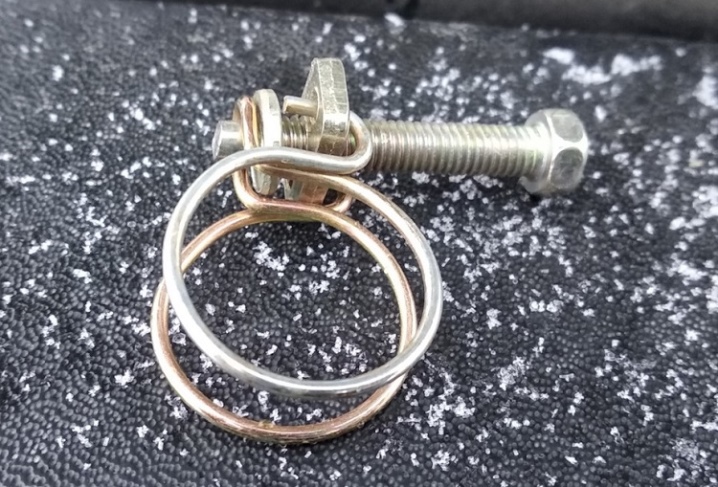
Peculiarities
The clamp is ring-shaped. It includes a tightening mechanism in the form of a bolt with a worm or metric thread. It can have a wire base or be presented in the form of a thin metal strip. The principle of operation is a tight fit of the surface, followed by tightening and fixing. A nut with a metric thread is used in modern versions of wire clamps, its tightening capitally fixes the crimping surface on the working base. Despite its wide range of applications, its only task is the tight connection of rubber, polypropylene hoses and pipes made of solid materials.
A wire clamp will help connect the irrigation hose to the water tap, ensuring it is firmly in place, without the possibility of breakdown and allowance for leaks. Clamps not only fix smooth surfaces, but are also used in the installation of corrugated pipes, connecting such an exhaust pipe to the chimney. The wire version is an improved folk method of connecting a pipe and a hose using ordinary wire, when it is tightly wrapped around the hose with pliers, fixing it tightly. The modern version has a galvanized steel helix with two threads at the ends of which are threaded. The ends are connected with a tightening nut and a lock.
Two turns increase the crimp area and evenly distribute the pressure on the surface.
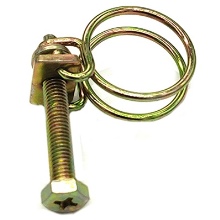
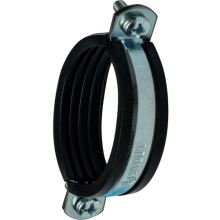
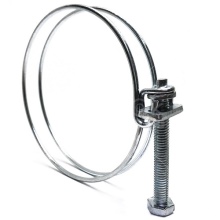
The main distinguishing feature of clamps from other components of the pipeline, for example, fittings, is that they are not mounted in a common system, but are installed on ready-made structures. Another important feature of the fastening device is the impossibility of lateral displacement, with the likelihood of horizontal movement... This allows the water supply system to react to network drops during operation, protecting its integrity from damage. Another feature of clamps is the impossibility of using them at cross joints or pipe bends, in which case they become ineffective. Fasteners are used on cast iron, reinforced concrete, plastic, steel and copper pipes, often replacing welding. As a rule, they are actively used to repair damaged areas - corrosion, cracks, pipe fractures.
Despite the simplicity of the device, the quality of the clamps is strictly regulated by GOST. This is due to the fact that the products are widely used for laying communications and ensure the strength of the entire backbone system. For all types of clamps, standards, standard sizes, and permissible loads have been established. Polymer fasteners also have the standards established by GOST 17679 80, where there are all the specified parameters for design features and performance.

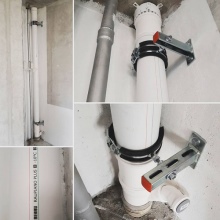
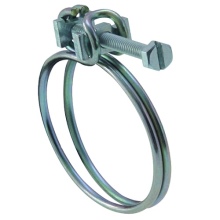
Scope of application
Clamps are used for various construction and repair work, but they are most in demand during the installation of plumbing systems. Without fasteners of this type, it is impossible to achieve a static structure. In addition to the fixing effect, the clamp is able to ensure tightness during the elimination of small leaks. To do this, we squeeze the problem area with a gasket and apply clamps.Their uniform and tight wrap-around ensures complete leakage bridging.
The peculiarity of their design is such that they can be used on horizontal, vertical and inclined pipes. For products of this type, humidity and temperature do not matter, and the presence of a rubber gasket allows the use of clamps as grounding. An unused tapping hole can be sealed using the same clamps. Wire clamps are in demand in the automotive industry, they are used to connect the fittings, they are used in the optical system and the cooling system, in those nodes where there is a fluid movement with constant vibration. They are also used in watering systems, where the water pressure is carried out under high pressure.In addition, the wire clamp is widely used in construction, machine-tool construction, agriculture, and for domestic purposes.
Wire-type clamps are used to connect thick-walled hoses, corrugated pipes, branch pipes and other problem areas.
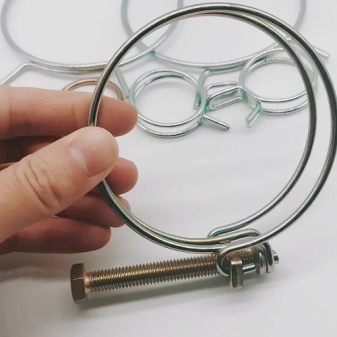
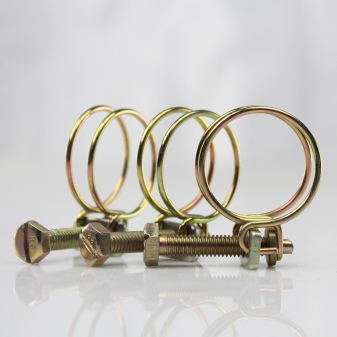
Views
The range of clamps is quite extensive, there are various configurations, fixing methods, shapes, sizes, and so on. In this regard, the types of clamps have been developed with individual characteristics.
- Spiral type - this is a crimping tape, along the length of which there are holes. These clamps are used on high pressure main systems, hydraulic and other systems.
- Clamp with screw 165 mm worm-type with a toothed track, equipped with tightening screws, suitable for heating systems. Such clamps are used in piping systems with constant vibration.
- Spring-loaded or self-clamping type has a narrow specialization, it is used for connecting pipes in fuel and automobile cooling systems. It consists of a strip of spring steel and has two protruding ends used for fixing.
- Wire clamp consists of one or more spiral steel wire rings. It has a lock connection and a tightening nut with metric or worm thread. It is comfortable to work with corrugated surfaces.
- The pipe type is a ring with staples. It has a clamping range from 10mm to 219mm.
- Plastic type has a length of 100 and further up to 400 mm.
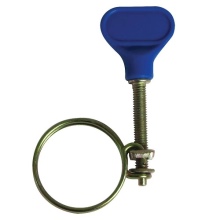
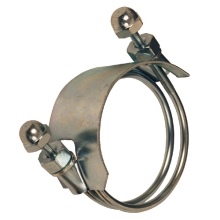
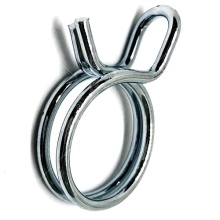
Criterias of choice
Given the variety of assortment offered on store shelves, the buyer, as a rule, focuses on the cost of the product and chooses what is cheaper. Most often, a clamp purchased in this way does not last long, quickly collapses, and gives a poor-quality fixation. The main thing to look for when choosing a device is marking.
Galvanized clamps marked W1 are of poor quality, as the slotted notches will be deformed by the clamping screw after the first use. The products with the W 2 marking are much more durable. They are made of stainless steel and have a higher price. It is worth paying attention to the presence of a mark on the product - such a mark must be present on a high-quality clamp.
Besides, when buying, you need to clearly understand where exactly and for what purposes you plan to use the fixing element. If the product is purchased to connect a watering hose to a water tap, then an inexpensive galvanized product will be sufficient for one season.
If, however, for stretching a pipeline or trunk networks, reinforced types of fasteners are used.
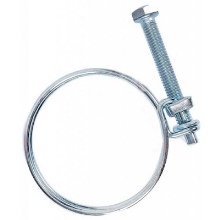
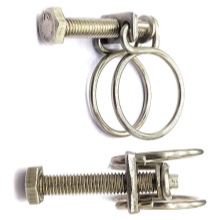
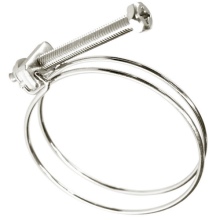
Application methods
The use of a wire clamp requires several conditions to be met.
- This option is used for thick-walled elastic hoses. Long-term, cracked hoses that have lost their softness and elasticity cannot withstand the pressure of small diameter steel wires. It destroys the structure of the material, can cut through, which will lead to leakage or even breakdown.
- When using a wire clip, it is recommended to use a rubber gasket.This allows for a more even distribution of pressure, extending the life of the hose.
- Some products are initially equipped with a seal, which eliminates the need to use a gasket, ensuring the most tight fit.
- It is allowed to use this type of clamp only for fastening to solid bases - metal or plastic pipes, since at the junction of two soft-walled surfaces, the wire will simply transfer them.
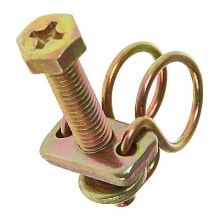
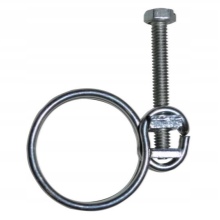
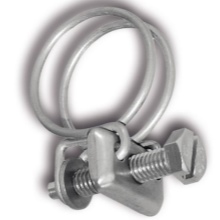
The use of steel spiral wire provides the most reliable and tight connection. In addition to design differences, the clamps have different fixing methods. It depends on the purpose for which the device is used. On store shelves, you can buy products with a rigid fixation format. This type is most convenient in places where the pipeline branches and bends.
On heating pipes, in networks with a high temperature regime, floating fixation is used.
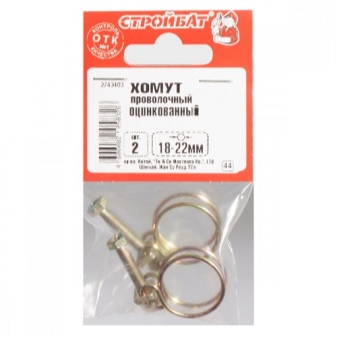
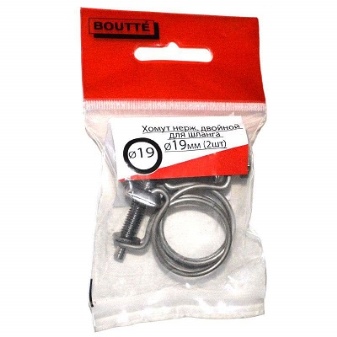
Examples of knitting wire clamps
Most often, devices made of knitting wire with a double loop are used on a large scale in construction when knitting reinforcement.
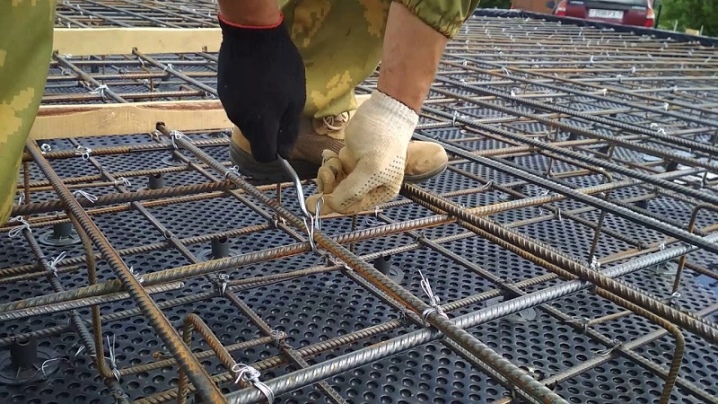
This is a great option when connecting corrugated hoses to a solid base.

Another way is to create a wire tie using knitting wire.

You can learn how to install a wire clamp on a hose without a clamp in the video below.













The comment was sent successfully.